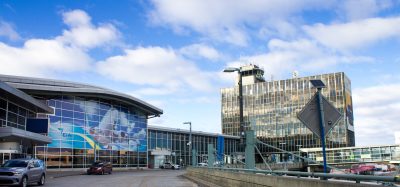When winter hits, Prague Airport will be ready!
Posted: 22 February 2010 | Jan Kadlec, Head of Airfield Operations, Prague Airport, Czech Republic | No comments yet
Prague/Ruzyne Airport is the largest international airport in Central Europe and is the gateway to the continent. That means operations must be ensured even under adverse weather conditions. The winter time period officially starts on November 1 and ends March 31, but the dates are always adapted to climatic conditions, so the start may come two weeks earlier or the end two weeks later, depending.
Prague/Ruzyne Airport is the largest international airport in Central Europe and is the gateway to the continent. That means operations must be ensured even under adverse weather conditions. The winter time period officially starts on November 1 and ends March 31, but the dates are always adapted to climatic conditions, so the start may come two weeks earlier or the end two weeks later, depending.
When snow falls, maintenance workers at the airport have their hands full. They have a sixty-minute designated time period within which to clear the runways for takeoff and landing, main taxi roads and aicraft parking stands. Last winter, in January (2009), they got the job done in a record 20 minutes (a cleaning of the general runway). A force of 17 sweepers/snowblowers cleared an area of almost 200,000 m² at Prague Airport in a single pass, for the first time in history.
Cutting-edge technology is used at the airport to get rid of snow and frost and get operations going again more quickly. Equipment on the job includes one of the largest snowploughs currently manufactured, capable of removing up to 12,000 tonnes of snow per hour, along with specialised wide-swath sweepers/snowblowers to clear runways (7.5m plough, 5.4m broom). In addition, there are two specialised gritters employing wet gritting, a technology which markedly increases the quality of chemical maintenance. The parking lot at Prague Airport has a total of 63 specialised machines for clearing snow and maintaining the surface.
Winter maintenance in non-public portions of the airport (the runway system, taxi roadways, aircraft parking stands, etc.) is always carried out using a combination of mechanical clearing and chemical treatment of surfaces by two independent workgroups. Since late 2008, an external company has been caring for publicly accessible surfaces (sidewalks, roadways, parking lots, etc.). This has allowed maintenance groups focused on key airport infrastructure to be strengthened, i.e., those working on the runway system, associated roadways and air traffic areas.
Standard winter snow and ice clearance at Prague Airport is taken care of similarly as at other European airports: Snow sweepers/ snowblowers first remove snow from airport surfaces using snowploughs, followed by rotary sweeping and snow blowing. In the event of frost or ice, or to prevent their appearance, a deicing agent is used. Air traffic areas at Prague Airport are deiced without the use of salt. Instead a special deicing agent is used which does not damage aircraft or the natural environment. After surfaces have been cleared, a special surface friction testing vehicle measures the so-called braking efficiency – friction coefficient. This information is subsequently given to pilots by the control tower, who fine-tune their takeoffs and landings accordingly.
During winter, Prague Airport operates under the so-called clean aircraft rule, in which a pilot is not allowed to take off in an aircraft which has not been deiced or which has snow on its propeller, wings, stabilisers, control surfaces etc. Two deicing vehicles with telescopic arms are used to remove snow and ice from aircraft, which might change their aerodynamics, increase weight and worsen pilot control. First snow and ice are removed from the aircraft by a warm water jet and special deicing fluid. Next, the aircraft receives a preventative coating of deicing fluid, at higher concentrations, to prevent further icing of the wings while taxiing for takeoff. The entire process lasts about seven-and-a-half minutes and takes place directly before takeoff, with passengers onboard the aircraft, to prevent renewed icing.
Interesting facts
Thanks to its improved technical facilities and greater number of employees, Prague Airport has been able to reduce the amount of time it takes to clear the used runway, main traffic roads and aircraft parking stands. The standard time needed to clear the runway is now down markedly to 60 minutes, instead of the 90 minutes the process required before. The time required to clear the runway in more difficult weather conditions has been reduced from 120 minutes to 90 minutes. It has also been possible to increase the time limit at which a particular weather situation will be evaluated as being at emergency levels. A weather emergency is now considered to be snowfall greater than 15cm in 24 hours (earlier it was 10cm in 24 hours) or an intensity of snowfall greater than 4cm/h (up from the earlier 3cm/h).
Summary data
- Prague Airport now has a total of 63 specialised pieces of equipment at its disposal for maintaining surfaces in winter, as well as two deicing vehicles with telescopic arms for the deicing of aircraft
- Time limits for cleaning runways have been reduced by 30 minutes, from 90 minutes under standard conditions to 60 minutes, and from 120 minutes under unfavourable meteorological conditions to 90 minutes
- Limits for announcing a weather emergency have been increased to a snowfall of 15cm in 24 hours or snowfall of 4cm/h for two straight hours.
New report from International Airport Review: Securing Airports in an Evolving Threat Landscape
International Airport Review has brought together top voices from across the global aviation security sector, including International Civil Aviation Organization (ICAO), ACI World, Fraport, Qatar Civil Aviation Authority, Winnipeg Airports Authority, and Smiths Detection to examine today’s most pressing airport security challenges and emerging threats.
This expert-led report provides a strategic assessment of the vulnerabilities facing airports in 2025, encompassing cyber-attacks, drone incursions, evolving geopolitical risks, and emerging technologies.
The result is a practical, insightful guide to strengthening airport resilience, anticipating risks before they escalate, and keeping your airport off the front page
Download the report for free and stay ahead of the security curve – READ FOR FREE NOW!















